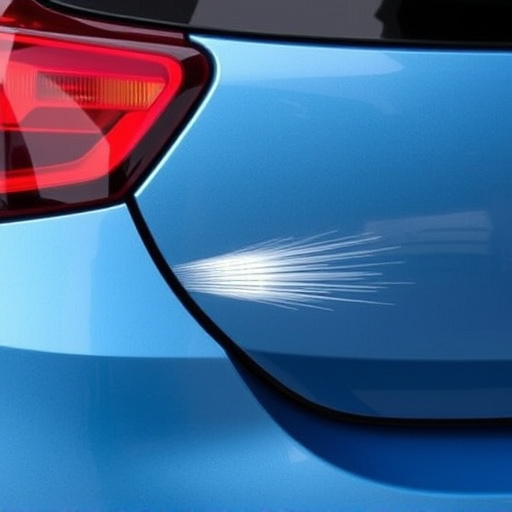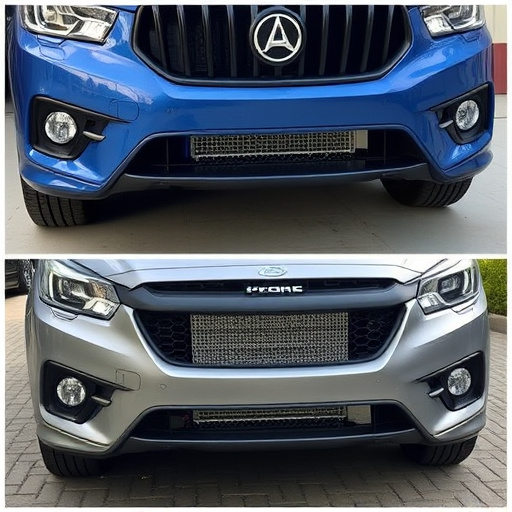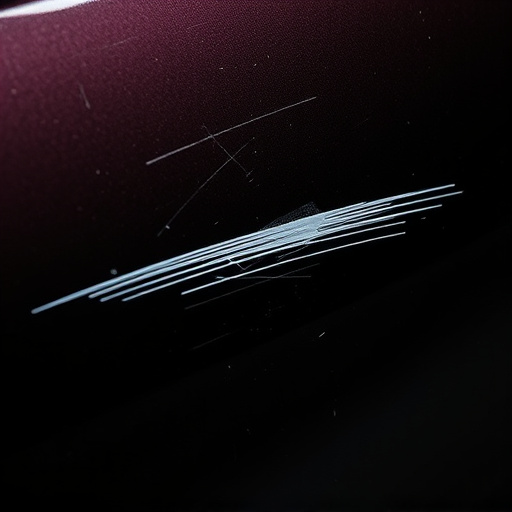Tesla Emblem Replacement: Warranty & Responsible Repair Guidelines

When considering a Tesla emblem replacement, assess damage, understand warranty coverage, and choose…….
In the ever-evolving world of automotive innovation, the iconic Tesla emblem has emerged as a symbol of cutting-edge technology and sustainable transportation. The process of replacing or enhancing this emblem goes beyond aesthetics; it represents a strategic move to reinforce brand identity, cater to evolving market demands, and ensure vehicles remain competitive in an increasingly diverse industry. This article delves into the intricate world of Tesla emblem replacement, exploring its historical roots, global impact, economic implications, technological innovations, regulatory landscape, challenges, successful implementations, and future prospects. By gaining a comprehensive understanding of this topic, readers will appreciate the significance of this seemingly simple yet impactful modification in shaping the automotive industry’s future.
Definition: Tesla emblem replacement refers to the act of updating or changing the logo or emblem associated with the Tesla brand on its vehicles, marketing materials, and related products. This process involves more than just a visual transformation; it encompasses strategic decisions regarding branding, design philosophy, and market positioning.
Core Components:
Logo Design: The primary element is the redesign or replacement of the Tesla logo, which has evolved over the years from its initial electric spark to the current abstract lightning bolt symbol. This design must capture the brand’s essence while adhering to modern aesthetics.
Emblem Placement: Determining where the emblem will be positioned on the vehicle is crucial. Options include the grille, front fenders, rear, or even integrated into the side mirrors, each placement offering unique opportunities for visual impact and brand visibility.
Material and Finish: Choices of materials, colors, and finishes play a significant role in creating a distinct look. From traditional metal emblems to modern 3D-printed designs, these options influence both aesthetic appeal and durability.
Historical Context:
The Tesla emblem has undergone several iterations since the company’s founding in 2003. Early models featured a more literal interpretation of an electric spark, evolving into a more abstract design to align with the brand’s futuristic image. In 2019, Tesla introduced a new logo, a minimalist lightning bolt symbol, which became synonymous with the company’s electric vehicle (EV) revolution. This latest emblem replacement aimed to simplify the previous design while maintaining its iconic status.
Significance:
Brand Identity: Emblem replacement is a powerful tool for reinforcing brand identity and differentiation in a crowded market. It allows Tesla to communicate its core values, such as innovation, sustainability, and technological advancement, through a visually compelling logo.
Market Adaptation: The automotive industry is constantly evolving, with new trends, consumer preferences, and technological breakthroughs emerging regularly. Emblem replacements allow Tesla to stay relevant by adapting to these changes while maintaining brand consistency.
Competitive Edge: In the highly competitive EV market, a distinctive emblem can set a vehicle apart from its competitors. It becomes a recognizable symbol, contributing to brand recognition and loyalty among consumers.
Tesla’s emblem replacement strategy has resonated worldwide, influencing automotive design trends and brand marketing across continents.
International Influence:
North America: The United States, Tesla’s home market, has seen a surge in unique emblem designs, with many EV startups adopting minimalist logos inspired by Tesla’s approach. Canada and Mexico have followed suit, incorporating indigenous elements to reflect their cultural heritage while embracing sustainability.
Europe: European automakers have embraced the concept of emblem replacement as a means of modernizing their brands. Germany, known for its automotive engineering prowess, has led the way with bold, technical designs, while countries like Sweden and Denmark have opted for more Scandinavian-inspired, minimalist logos.
Asia: In Asia, Tesla’s influence is evident in the adoption of sleek, futuristic emblems by Japanese and Korean automakers. China, a significant EV market, has seen an influx of locally produced EVs with unique emblem designs that blend Eastern aesthetics with modern design trends.
Key Trends Shaping the Landscape:
Minimalism: A global trend towards minimalist logo designs continues to gain traction, influenced by Tesla’s 2019 logo introduction. This trend emphasizes simplicity, clean lines, and a focus on brand essence rather than intricate details.
Sustainability Symbolism: With increasing environmental consciousness, many automakers are incorporating elements that symbolize sustainability into their emblems. These include leaf motifs, organic shapes, or recycled material references to align with eco-friendly branding.
Cultural Integration: Embracing local culture and heritage is a growing trend, particularly in regions with distinct artistic traditions. Integrating indigenous designs or iconic symbols can foster a sense of national pride while promoting sustainability.
The Tesla emblem replacement process has significant economic implications, impacting various sectors within the automotive industry.
Market Dynamics:
Brand Value: A distinctive emblem contributes to the overall brand value and market positioning of Tesla vehicles. It enhances perceived quality and premium pricing, as consumers often associate unique design elements with higher craftsmanship.
Consumer Perception: Emblem replacements can influence consumer perception and purchasing decisions. A well-designed emblem that resonates with buyers’ values can increase brand loyalty and encourage repeat purchases.
Investment Patterns:
Design Budget: Tesla allocates resources for emblem design, ensuring the new logo or emblem is visually appealing and aligns with its overall brand strategy. This investment includes creative direction, graphic design, and prototyping.
Manufacturing Costs: Depending on the complexity of the new emblem, manufacturing costs may increase, especially if custom materials or specialized production techniques are required.
Economic Impact on Automotive Industry:
Competitive Landscape: Emblem replacements can stimulate competition among automakers, encouraging innovation in logo design and brand identity. This trend contributes to a dynamic market where consumers benefit from a wide range of aesthetic choices.
Supply Chain: Changes in emblem design may impact the supply chain, affecting manufacturers specializing in automotive emblem production. New partnerships or collaborations could emerge to meet the demands of evolving designs.
Tesla’s emblem replacement efforts have been accompanied by technological breakthroughs that enhance both the design and functionality of vehicle emblems.
3D Printing: One of the most significant advancements is the use of 3D printing technology for creating custom emblems. This method allows for intricate designs, rapid prototyping, and even the production of functional components. Tesla has explored this technology to produce unique, one-off emblems for limited-edition vehicles, adding a layer of exclusivity.
LED Integration: Incorporating LED lighting into vehicle emblems offers endless design possibilities while providing functional benefits. From dynamic animations to subtle glows, LED-infused emblems can enhance brand visibility at night and add a modern touch to the overall vehicle aesthetic.
Smart Emblem Technology: The future of emblem technology lies in its integration with advanced driver assistance systems (ADAS) and autonomous driving capabilities. Smart emblems could provide real-time information, such as vehicle status updates or navigation directions, displayed through interactive displays or LED matrices. This technology would not only enhance functionality but also contribute to a more immersive driving experience.
The automotive industry, including emblem replacement practices, is subject to various policies and regulations that shape its development.
Trademark Laws: Tesla must adhere to trademark laws when replacing or designing new emblems to protect its intellectual property rights. This includes ensuring the new logo doesn’t infringe on existing trademarks and maintaining brand consistency across all marketing materials.
Safety Standards: Vehicle emblems, especially those with lighting elements, must comply with safety standards related to lighting systems. These regulations ensure that emblems meet specific brightness, color temperature, and visibility requirements for road safety.
Environmental Regulations: As emblem designs may incorporate new materials or technologies, Tesla must consider environmental impact. Regulatory bodies encourage the use of sustainable materials and production methods, aligning with global efforts to reduce automotive industry emissions.
Cultural Sensitivity: In regions with diverse cultural backgrounds, automakers must exercise caution when designing emblems that resonate with local communities. Offensives symbols or designs can lead to regulatory issues and brand reputation damage. Embracing cultural diversity in emblem design can foster a positive connection between consumers and the vehicle brand.
Despite its potential benefits, Tesla emblem replacement is not without challenges and criticisms. Addressing these issues is crucial for a successful implementation and maintaining consumer trust.
Main Challenges:
Brand Consistency: Maintaining brand consistency across various models and regions can be challenging with multiple emblem designs. Ensuring that each vehicle or product line’s emblem aligns with the overall Tesla brand identity requires careful design guidance and standards.
Consumer Perception: Some consumers may view frequent emblem changes as a sign of instability or inconsistency, especially if they have invested in older model vehicles. Managing consumer expectations and communicating the rationale behind design updates is essential.
Regulatory Compliance: Navigating global regulations related to vehicle emblems can be complex, particularly regarding lighting standards, safety requirements, and cultural sensitivities. Staying ahead of changing laws while adhering to local norms is a continuous task.
Strategies for Overcoming Challenges:
Clear Design Guidelines: Develop comprehensive design guidelines that outline the brand’s emblem design philosophy, color palettes, and allowed variations. These guidelines should be accessible to all design teams involved in Tesla products worldwide.
Consumer Engagement: Involve customers in the design process through surveys, focus groups, or social media campaigns. Gaining insights into consumer preferences can help guide emblem design decisions while fostering a sense of community involvement.
Regular Updates and Communication: Keep consumers informed about emblem changes, their rationale, and the benefits they bring to the overall vehicle experience. Transparent communication builds trust and helps manage expectations.
Case Study 1: Tesla Model S Plaid – A Bold New Look
Tesla’s introduction of the Model S Plaid in 2020 brought a significant update to its emblem design philosophy. The new emblem featured a dynamic, electric-blue lightning bolt with a subtle gradient effect, symbolizing the vehicle’s high-performance capabilities. This replacement aimed to reflect the Model S Plaid’s cutting-edge technology and rapid acceleration.
Impact: The updated emblem became an iconic representation of Tesla’s performance line, enhancing the brand image among sports car enthusiasts. Its dynamic design captured the essence of electric vehicle innovation, solidifying Tesla’s position as a leader in sustainable high-performance vehicles.
Lessons Learned:
Target Audience Engagement: Understanding the target audience’s preferences is crucial. For high-performance vehicles, a bold, dynamic emblem design resonates with enthusiasts who appreciate cutting-edge aesthetics.
Embrace Technology: Incorporating technological advancements in emblem design, such as lighting effects and gradients, can create a modern, futuristic look that aligns with Tesla’s brand identity.
Case Study 2: Volkswagen ID.3 – Embracing Sustainability
Volkswagen’s ID.3, an electric vehicle designed to compete directly with Tesla’s offerings, featured a unique emblem replacement strategy that focused on sustainability. The new logo was a minimalist, stylized “e” symbol, representing the vehicle’s electric drive system.
Impact: This subtle yet powerful emblem design communicated Volkswagen’s commitment to sustainable mobility. It became an iconic symbol of the company’s transition to electric vehicles, appealing to environmentally conscious consumers who appreciated the brand’s sincerity and forward-thinking approach.
Lessons Learned:
Simplicity and Meaning: A minimalist logo with a clear environmental message can be highly effective. The “e” emblem conveyed the vehicle’s core technology while keeping the design simple and memorable.
Cultural Relevance: Incorporating elements that resonate with local cultures or global sustainability movements can strengthen brand connection among diverse consumer groups.
The world of Tesla emblem replacement is poised for continued growth and innovation, driven by technological advancements, evolving consumer preferences, and global market trends.
Emerging Trends:
AR/VR Integration: Augmented reality (AR) and virtual reality (VR) technologies can be leveraged to create interactive emblem experiences. Consumers could scan the emblem with their smartphones to access additional vehicle information, specifications, or even immersive brand storytelling content.
Dynamic Lighting Displays: As LED technology advances, dynamic lighting displays on emblems could become more common. These could include animated patterns, changing colors, or even basic graphics, adding a new layer of visual appeal and functionality.
Customizable Emblems: With advancements in 3D printing and digital manufacturing, customers may have the option to customize their emblem designs, allowing for personalized vehicle branding that reflects individual style.
Growth Areas:
Autonomous Vehicles: As autonomous driving technology matures, emblem design could evolve to include interactive displays providing navigation directions or driver assistance information. This integration would enhance the overall in-cabin experience.
Global Market Expansion: With Tesla expanding into new markets, especially in Asia and Europe, local cultural influences will play a significant role in emblem design. Adapting global designs to reflect regional aesthetics while maintaining brand consistency will be crucial.
Sustainability Initiatives: The automotive industry is under increasing pressure to embrace sustainability. Emblem designs are likely to incorporate more eco-friendly materials and references to sustainable practices, further emphasizing Tesla’s commitment to environmental responsibility.
Tesla emblem replacement is a powerful tool that drives brand identity, market differentiation, and consumer engagement. Through strategic design choices, technological innovation, and global trend adaptation, Tesla has demonstrated its ability to stay at the forefront of automotive branding. As the industry continues to evolve, embracing new materials, technologies, and sustainability initiatives will be essential for automakers to maintain their competitive edge.
The case studies presented in this article highlight successful implementations that have left a lasting impact on consumer perception and brand identity. By learning from these examples and addressing challenges through thoughtful strategies, automakers can navigate the complexities of emblem replacement while fostering strong brand loyalty and market resilience. As the automotive landscape continues to transform, Tesla emblem replacement serves as a testament to the creative potential and enduring influence of branding in shaping our future mobility experiences.
Q1: Why does Tesla replace its emblem occasionally?
A: Tesla, like any evolving brand, adapts its emblem design to reflect changes in technology, market trends, and consumer preferences. These replacements ensure the brand stays relevant and appealing to a diverse customer base.
Q2: Can I purchase official Tesla emblem replacements for my vehicle?
A: Yes, Tesla offers genuine emblem replacement parts through its authorized dealers and online store. Additionally, after-market suppliers may offer compatible options for those looking to customize their vehicles.
Q3: How do global regulations impact Tesla’s emblem design?
A: Global regulations regarding lighting standards, safety, and cultural sensitivity guide Tesla’s emblem design decisions. The company ensures its emblems comply with local laws while maintaining brand consistency worldwide.
Q4: Will custom emblem designs be available for Tesla vehicles?
A: In the future, Tesla may explore options for custom emblem design, allowing customers to personalize their vehicles. However, this feature is not currently available.
Q5: What technologies can I expect to see in the next generation of Tesla emblems?
A: The next generation of Tesla emblems could incorporate advanced LED lighting displays, interactive AR/VR experiences, and dynamic animations, enhancing both aesthetics and functionality.

When considering a Tesla emblem replacement, assess damage, understand warranty coverage, and choose…….

Replacing a Tesla emblem requires skill and precision. It involves removing the old emblem carefully…….

Tesla emblem replacement requires strict adherence to brand guidelines for visual consistency. Use a…….

Replacing Tesla emblems with high-quality matches enhances market appeal, boosting resale value. The…….

Tesla emblem replacement is a critical aspect of maintaining brand identity in classic car restorati…….

Replacing a Tesla emblem involves assessing damage, removing the old emblem, installing new ones, an…….

Replacing a Tesla emblem demands skill and precision to maintain aesthetic integrity. It involves re…….

Tesla emblem replacement is accessible for professionals and enthusiasts alike. Key steps include re…….

Tesla emblem replacements require understanding material types and mounting styles. Proper technique…….